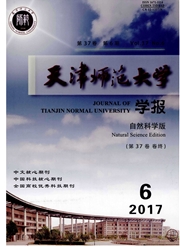

 中文摘要:
中文摘要:
使用革兰氏阳性菌——金黄色葡萄球菌,对注银热解碳的抗菌机理作了探讨分析.银离子的注入能量为70keV,注入剂量分别为5×10^14,1×10^14,5×10^17ion/cm^2.用俄歇电子能谱(AES)和X射线光电子能谱(XPS)对样品表面进行了微观分析.结果表明:材料表面形成了富银层;对注银剂量相同的热解碳,直接接触的抗菌效果比其滤液的抗菌效果好.说明注银热解碳的抗菌作用是溶出的银离子和未溶出的材料表面络合状银离子的共同抗菌结果,且杀菌以银离子溶出为主.
 英文摘要:
英文摘要:
By using Staphylococcus aureus which is a kind of Gram-positive bacteria the bactericidal mechanism of pyrolytic carbon with silver implanted is studied. Energy of silver ions implanted is 70 keV, and doses of that are 5X10^14 , 1 X 10^15 , 5X 10^17 ions/cm^2. By using Auger Electron Spectroscopy and X-ray Photoelectron Spectroscopy the surface microstructure of samples is analyzed. The results show that Ag-rich layer is formed on the surface of material. For the pyrolytic carbon samples with same dose of silver implanted the bactericidal effect of touching directly is better than that of its filtrate. It means that the dissolved silver ions and the complex silver ions on the surface of material resist bacteria jointly, and the dissolved silver ions play the more important role.
 同期刊论文项目
同期刊论文项目
 同项目期刊论文
同项目期刊论文
 期刊信息
期刊信息
